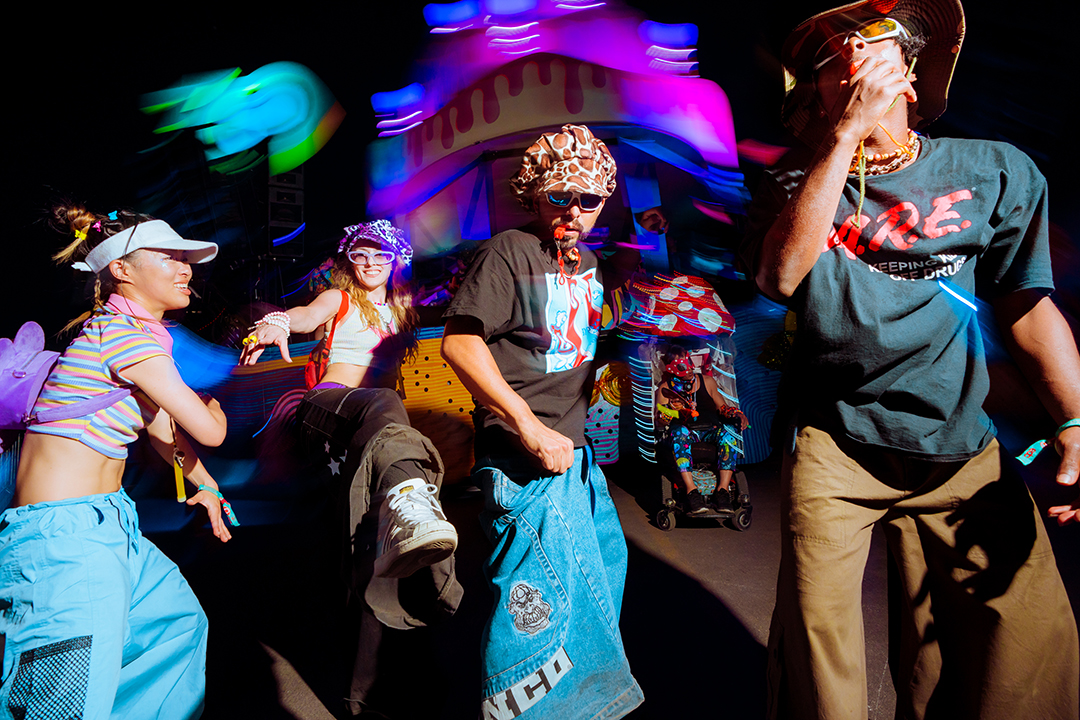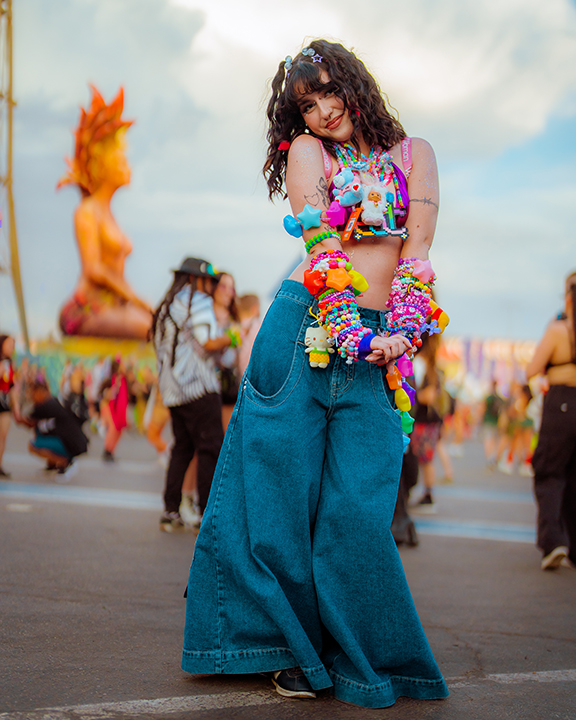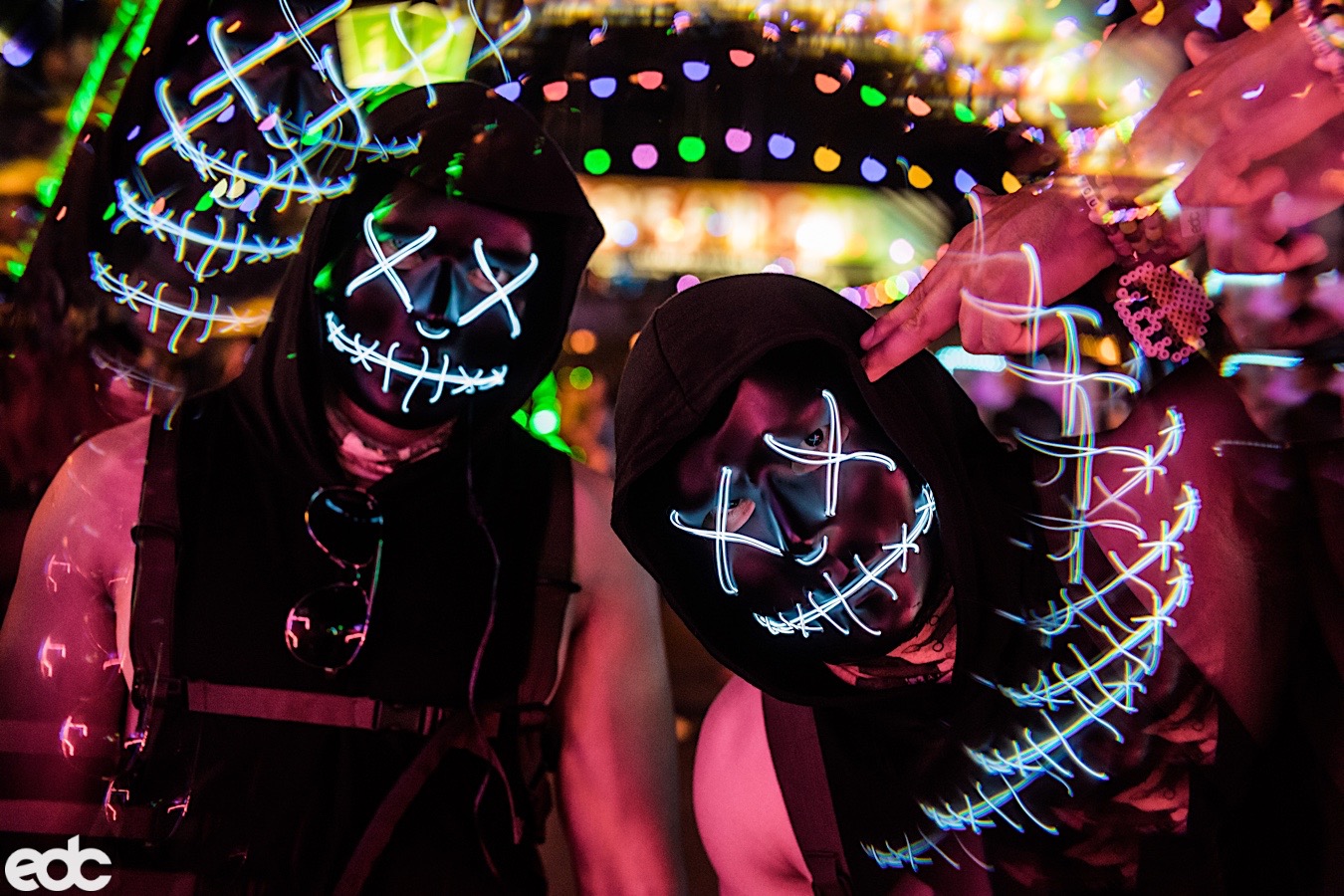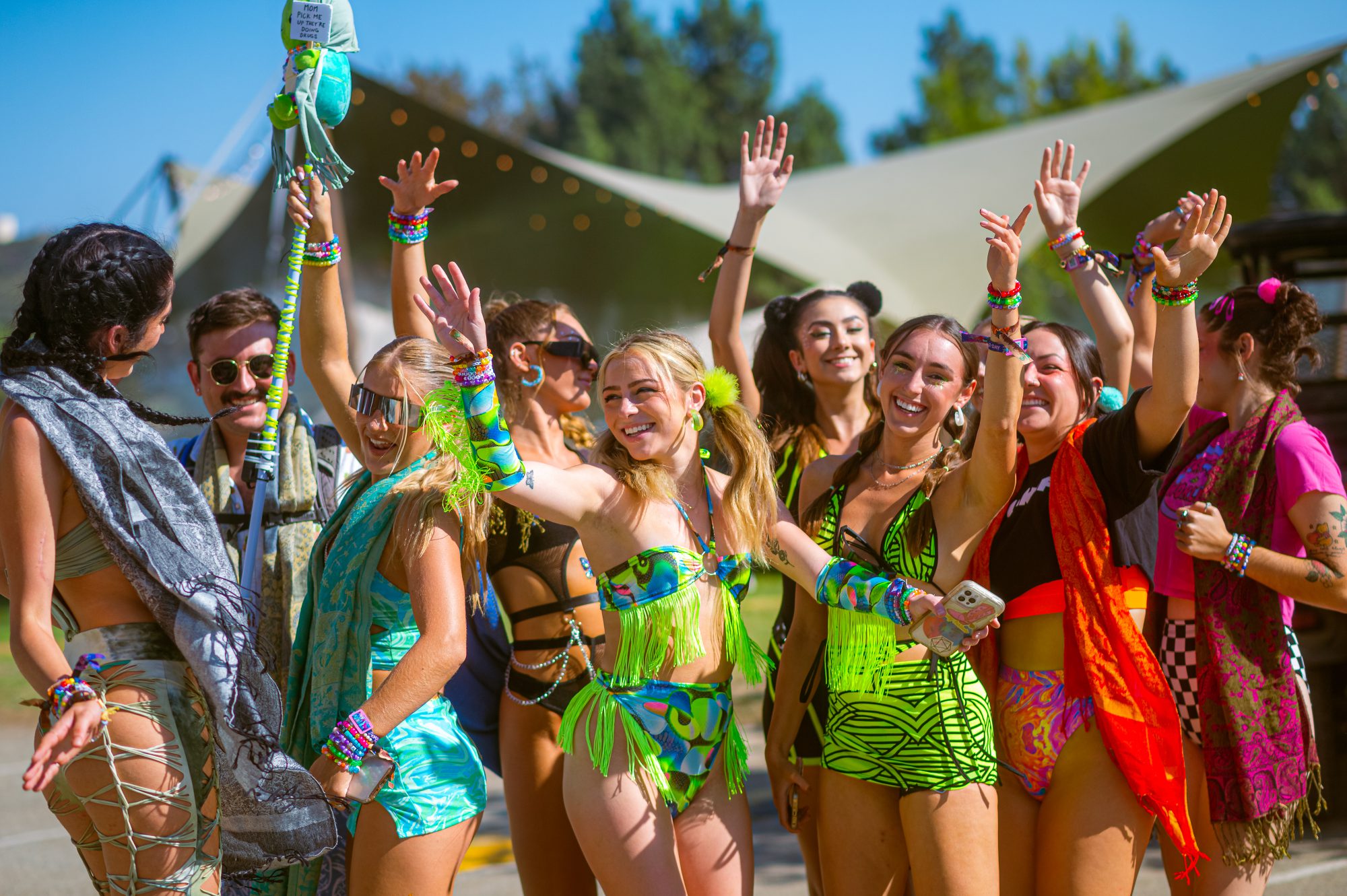Since its inception, Electric Daisy Carnival (EDC) has been more than just a music festival—it’s a vibrant tapestry of self-expression, unity, and cultural convergence.
As EDC has grown from an underground gathering to one of the world’s largest music events, its attendees’ fashion has mirrored this evolution, reflecting broader societal shifts and the diverse communities that create its foundation. Read on below as we chart rave fashion through the years.

The 1990s: Birth of the Rave Aesthetic
The 90s marked the genesis of North American rave culture, with fashion serving as both a statement and a necessity. Ravers donned phat pants and neon-colored crop tops, creating a silhouette that was both functional and flamboyant. Kandi bracelets—handmade from colorful beads—became universal symbols of the PLUR ethos: Peace, Love, Unity, and Respect. The era’s fashion was a rebellion against mainstream norms, embracing a DIY spirit that celebrated individuality and community.
Phat Pants: These ultra-wide-legged pants, often adorned with reflective strips and vibrant colors, became synonymous with rave attire.
Kandi Culture: Beaded bracelets exchanged as tokens of friendship embodied the PLUR (Peace, Love, Unity, Respect) ethos.
Accessories: Pacifiers, plush backpacks, and visors were commonplace, serving both aesthetic and practical purposes.

The 2000s: Cyber Meets Street
As technology advanced, so did rave fashion. The early 2000s saw the rise of cyber-raver aesthetics, characterized by LED accessories, PVC clothing, and platform boots. Cyberlox—tubular crinoline hairpieces—became a staple, adding a futuristic flair to outfits. Simultaneously, elements of hip-hop fashion, like Adidas sneakers and tracksuits, merged with the rave scene, reflecting the genre’s growing influence. This fusion of styles created a unique look that was both edgy and eclectic, embodying the era’s experimental spirit.
Go-Go Inspired Outfits: Fluffies (furry leg warmers), mini skirts, and sequined bras became prevalent, especially among female attendees.
DIY Aesthetics: Attendees began customizing their outfits, adding rhinestones, glowsticks, and thematic elements.
Brand Influence: Mainstream brands take notice, blending streetwear with traditional rave elements.
In this era, underground rave culture began blending with streetwear influences, signaling the growing crossover between electronic parties and mainstream popular culture. The result was a striking fusion of utility and fantasy—ravers looked like they were stepping out of a sci-fi film, but with swagger rooted in city streets. It set the stage for the bold self-expression and brand-driven aesthetics that would define the 2010s.

The 2010s: Mainstream Explosion
With dance music’s surge into the commercial mainstream as EDM, EDC’s fashion became more diverse and extravagant. Attendees embraced themed costumes, body paint, and elaborate, but retrospectively controversial, headdresses. LED-infused garments and fiber-optic accessories illuminated the night, turning festival grounds into a sea of light. The rise of social media platforms amplified this trend, as ravers curated their looks for both personal expression and online visibility.
LED and Tech-Infused Attire: Outfits incorporated LED lights, fiber optics, and interactive elements, turning attendees into walking light shows.
Holographic and Reflective Materials: These materials became popular, enhancing the visual appeal under festival lights.
Thematic Costumes: Groups coordinated outfits around themes, from superheroes to mythical creatures.
Inclusivity became even more pronounced, with fashion reflecting a broader spectrum of identities and expressions. Gender-neutral and body-positive clothing lines emerged, catering to the diverse EDC community.

The 2020s and Beyond: Functional Fashion
As we move further into the 21st century, EDC fashion continues to evolve in ways that balance aesthetics, function, and ethics.
There’s a growing emphasis on sustainability, with attendees opting for eco-friendly materials, upcycled garments, and slow fashion pieces that stand out from mass-produced fast fashion. Simultaneously, wearable technology—like Apple watches or FitBit—has become more prevalent, indicating a shift in more health-conscious behavior.
Functionality has taken on new importance, with minimalist clothing choices—such as bikinis, crop sets, mesh layers, and breathable athletic-inspired gear—dominating the scene for their ability to offer freedom of movement and comfort during long nights of dancing.
Alongside these shifts, we’re witnessing the rise of rave-focused fashion brands like iHeartRaves, Rave Wonderland, and Rolita Couture, which design collections specifically for festival culture and body inclusivity. Accessories have also evolved: pashmina, once niche, are now ubiquitous, used for both style, comfort, and utility against desert winds or cold nights.
Eco-Friendly Fashion: Attendees are opting for outfits made from recycled materials, supporting brands that prioritize sustainability.
Cultural Appreciation vs. Appropriation: There’s a growing awareness and respect for cultural symbols, with attendees educating themselves to avoid appropriation.
Minimalist Aesthetics: While still vibrant, there’s a trend towards minimalist designs, focusing on comfort and functionality.







